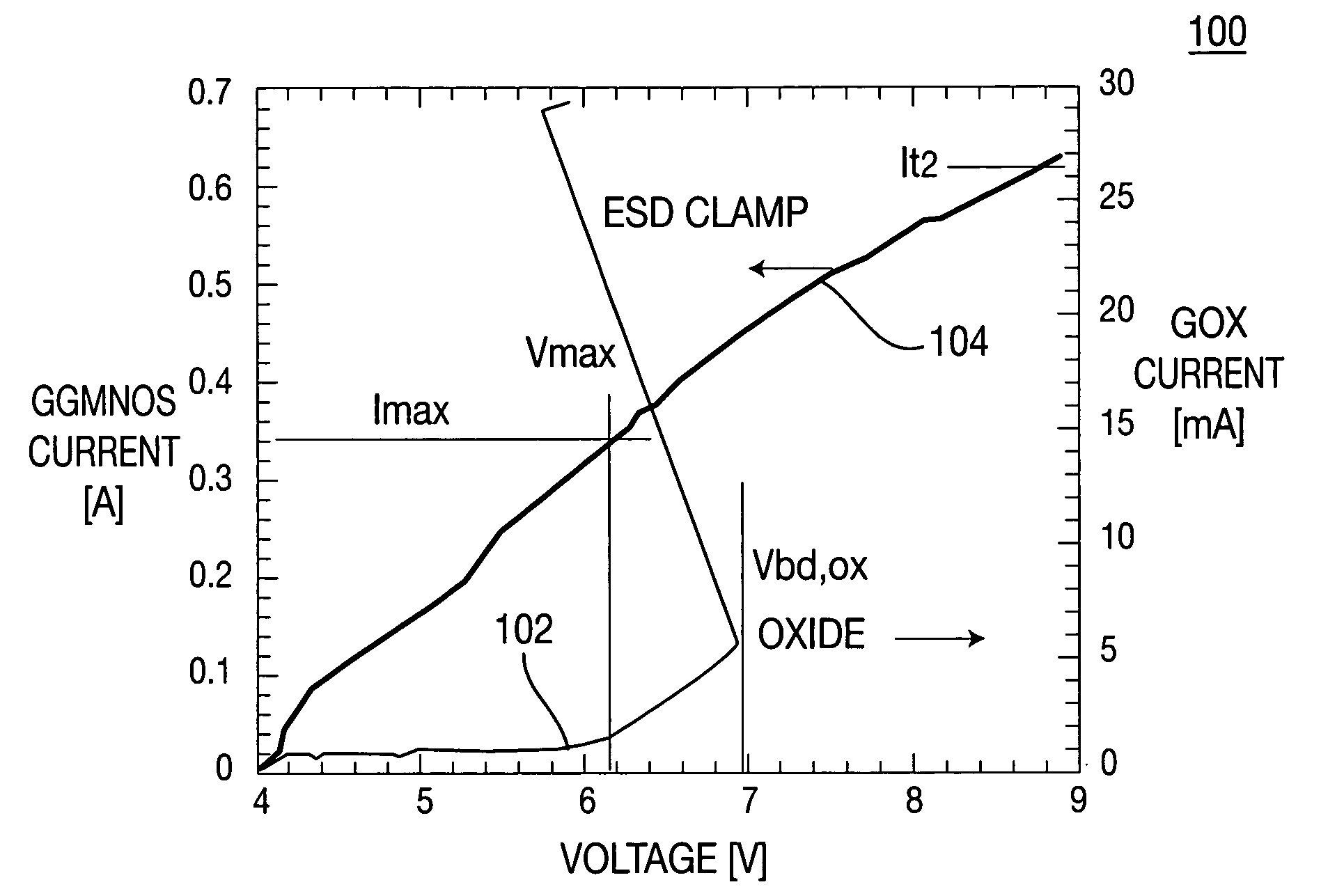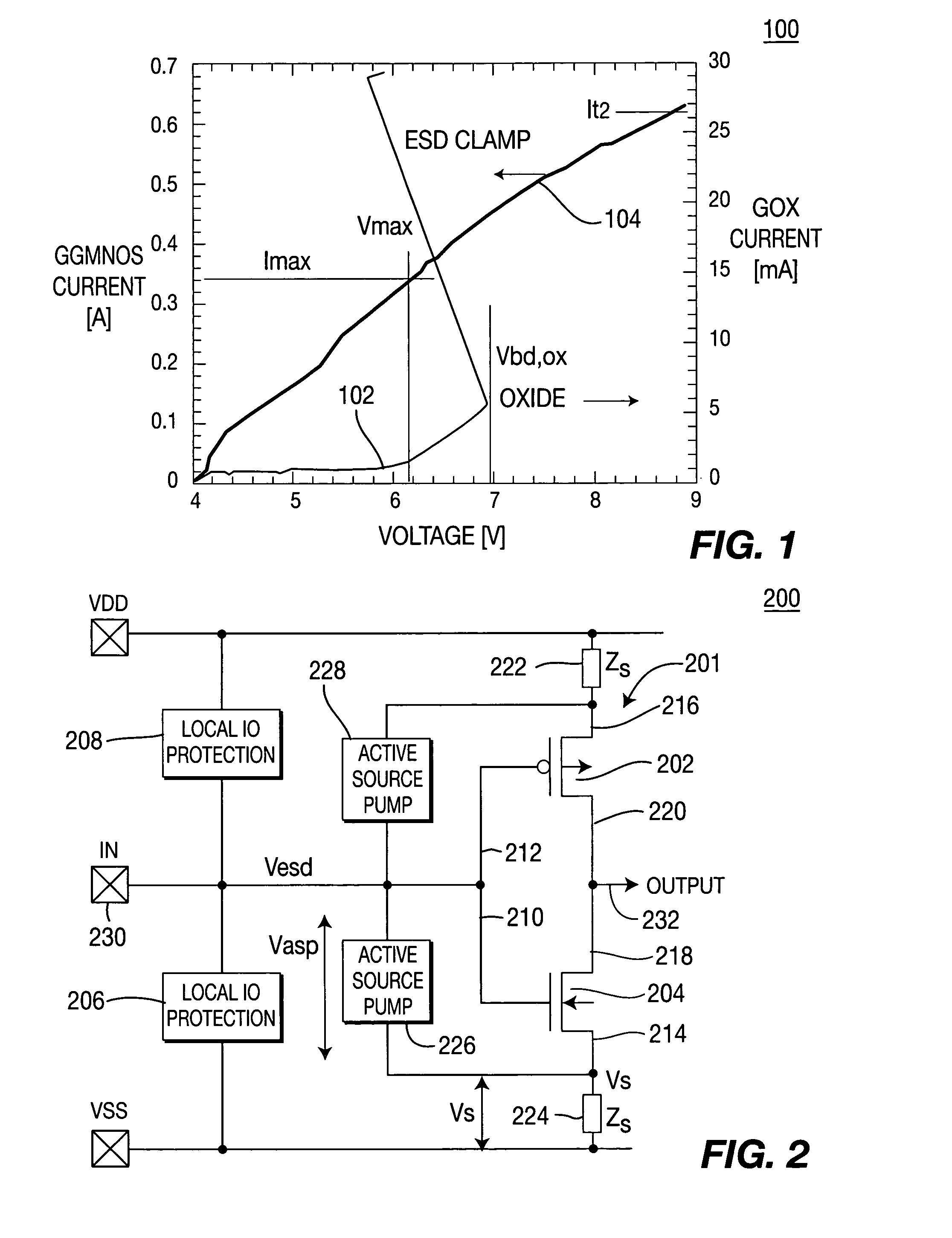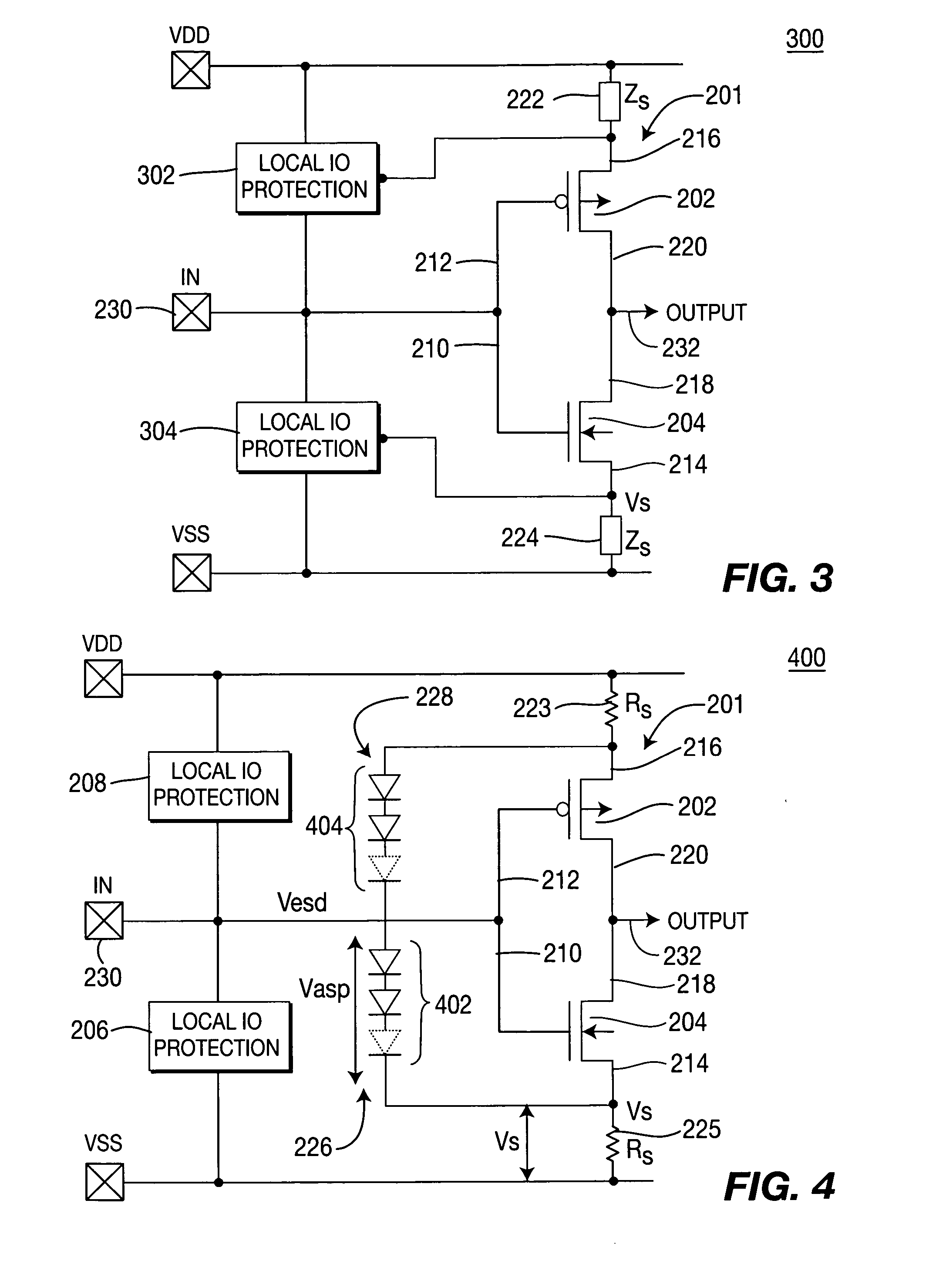Method and apparatus for protecting a gate oxide using source/bulk pumping
a gate oxide and source/bulk pumping technology, applied in the field of circuits, can solve the problems of limiting the gate-to-source and/or gate-to-bulk voltage produced by the esd event, and achieve the effect of reducing the risk of overvoltage protection resistan
- Summary
- Abstract
- Description
- Claims
- Application Information
AI Technical Summary
Benefits of technology
Problems solved by technology
Method used
Image
Examples
first embodiment
[0028]FIG. 2 depicts a block diagram of a circuit 200 that performs source pumping in accordance with the present invention. The circuitry 201 to be protected from ESD events comprises transistors 202 and 204, e.g., a traditional input signal inverter. These transistors may be NMOS or PMOS type transistors. Of course, the present invention can be used with other circuit configurations, devices or individual transistors.
[0029] A first conventional ESD clamp circuit 206 (also referred to herein as a primary protection circuit) is formed between the IN terminal and Vss, and a second conventional ESD clamp circuit 208 is formed between the IN terminal and Vdd. For example, such circuits include those described in commonly assigned U.S. Pat. Nos. 6,768,616 and 6,791,122 which are herein incorporated by reference. Each transistor 202 and 204 comprises a gate 212 / 210, a source 216 / 214, and a drain 220 / 218. Vdd is coupled to the source 214 of transistor 202 via a first source impedance circ...
second embodiment
[0030]FIG. 3 depicts a block diagram of a circuit 300 that forms the invention, wherein the source pumping voltage is supplied by each of the primary protection circuits 302 and 304. In other words, the source pumps 226 and 228 of FIG. 2 are embedded into the ESD clamp circuits 302 and 304.
[0031] In either embodiment, during an ESD stress event, the source impedance circuits 222 / 224 provide a voltage drop to lift the source potential by pumping a small amount of ESD current (typically 214 / 216. A small fraction of the ESD current is conducted thru the source impedance ZS 222 / 224 that, in turn, results in a source bias voltage VS. In other words, the total ESD voltage occurring between pad and ground is divided into two parts: VESD=VASP+VS. As a result, a higher total transient gate voltage VESD=Vmax′ can be tolerated before the low ESD voltage limit Vmax (close to the transient oxide breakdown) directly across the gate oxide (GOX) is reached. In other words, the effective ESD design ...
third embodiment
[0047]FIG. 8 depicts a block diagram of the invention. The general concept of this embodiment is to create a potential increase at the internal source node due to the tunneling current flowing through the gate-source oxide during ESD without using any external pump current. Prerequisite for a functional design, however, is that the source series resistance 806 / 808 can be switched from a relatively low-ohmic normal operation state (Rs˜10 Ω) to high-ohmic ESD value (Rs>˜kΩ). Suitable Rs elements 806 / 808 as well as control circuits 802 / 804 are required. The control circuits 802 / 804 detect the ESD event and turn the active Rs device 806 / 808 into the high-resistance ESD mode, thus increasing the internal source voltage and allowing for a higher ESD gate voltage Vg.
[0048]FIG. 9 depicts a first implementation of the third embodiment of the invention shown in FIG. 8. A normally-on PMOS transistor 902 is connected in series with the NMOS input transistor 204. A control circuit 802 comprising...
PUM
 Login to View More
Login to View More Abstract
Description
Claims
Application Information
 Login to View More
Login to View More - R&D
- Intellectual Property
- Life Sciences
- Materials
- Tech Scout
- Unparalleled Data Quality
- Higher Quality Content
- 60% Fewer Hallucinations
Browse by: Latest US Patents, China's latest patents, Technical Efficacy Thesaurus, Application Domain, Technology Topic, Popular Technical Reports.
© 2025 PatSnap. All rights reserved.Legal|Privacy policy|Modern Slavery Act Transparency Statement|Sitemap|About US| Contact US: help@patsnap.com



